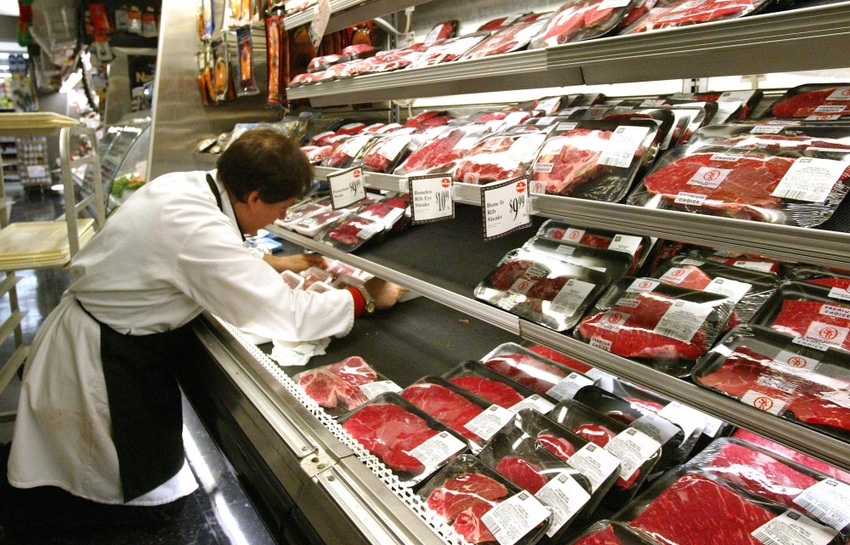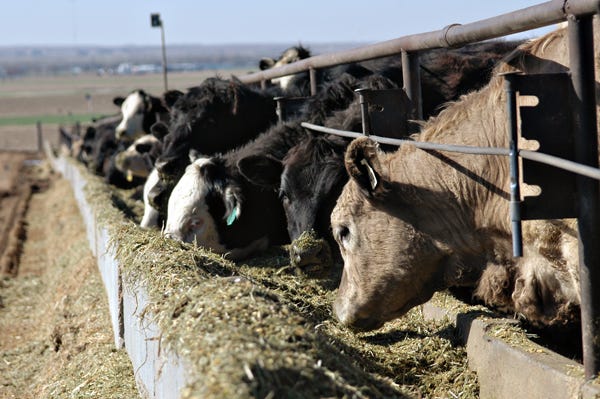6 Trending Headlines: Good news for beef producers; PLUS: Did your college make the cut?
Strong retail beef sales plus promising exports spell good news for beef demand. That and other news you can use awaits you in this week’s Trending Headlines.

Retail sales, export markets are good news for beef producers
Beef demand is shaping up to look good in 2018, according to Jim Robb of the Livestock Market Information Center. During the recession, restaurants led the way in steady upward trending beef sales. But in recent months, restaurant sales have started to moderate and level off. Meantime, grocery store sales have taken the lead, showing 3% to 4% increases in January and February so far this year, according to the Oklahoma Farm Report.
"Those are pretty solid numbers," Robb said. "That's a growth rate that when combined with the restaurant sales, we end up with about a 3% growth rate in total sales. There's a lot of competition in the grocery store segment. To have these overall sales continuing to point higher is good news in the broad sense of beef demand."
Click here to read and listen to Robb’s thoughts on beef demand.
Reclaiming lost value in the beef business

Back in 1989, the sum total of lost opportunities for beef producers—among them reproductive performance, weaning weight and feed efficiency—amounted to $44 billion. Have we improved? That’s the question Texas A&M Visiting Professor Gary Smith sought to answer with attendees of the 25th Zoetis-sponsored Cattlemen’s College during the 2018 Cattle Industry Convention in Phoenix, Ariz., reports the Angus Beef Bulletin.
As a whole, Smith said the industry has regained about 5% of the lost opportunities, but there is still work to be done. He concluded that in 2016, total gross revenues from beef sales and fed cattle byproducts were $103 billion. The total cost of these beef industry inefficiencies amounts to $939 per fed steer or heifer. The beef industry could increase gross revenues by 22% if existing lost opportunities were corrected.
Beef influence on dairy cattle could improve marketing options, bottom line

Dairy owners might be able to add more to their bottom line if they introduce a beef bull into their breeding program for some of the producing cows in their herd, a Texas A&M AgriLife Extension Service specialist said.
But just any bull from the sale barn won’t work, said Ted McCollum, AgriLife Extension beef cattle specialist in Amarillo, who spoke at the High Plains Dairy Conference recently in Amarillo. “Select bulls to complement characters of the dairy breed. Find bulls of known genetic potential for birth weight, growth, muscling, carcass grade and weight, or work with an AI company with programs that offer beef sires targeted for use on dairy cows.”
When can you start grazing forage mixtures?

So, when is the proper time to graze? The first two factors to consider are: a) is the sward mature enough? And b) are the soil conditions appropriate to put the animals on the paddock without causing plant and soil damage? For newly established swards, this is critical. For these newly seeded fields, do a “yank test” before turning animals into the paddock, reports onpasture.com.
A “yank test” is using your hand to mimic your livestock grazing. In the case of a cow, her tongue wraps around the forage and pulls it into her mouth quickly. In this case, a yank test is a quick grab of the forage with your hand. If yanking a handful pulls the forage out of the soil by the roots, then the new seeding is not ready for grazing, as the livestock would do severe damage to your newly seeded pasture. It is better to feed hay or graze elsewhere until the paddock is more mature or the soil is drier.
Ranking of world's best agricultural universities released

Did your university make the list? A company called QS, in partnership with Elsevier, has released its sixth annual ranking of the world's best agricultural colleges. The top 10 globally and top 25 in North America include: (Indicated behind each is their prior year's ranking).
1. Wageningen Univ.--the Netherlands (#1)
2. Univ. Of California--Davis (#2)
3. Cornell University (#3)
4. Swedish University of Agricultural Sciences (#4)
5. Univ. of California--Berkeley (#4)
6. Univ. of Reading-United Kingdom (#10)
7. University of Wisconsin--Madison (#6)
8. Michigan State University (#7)
9. Purdue University (#8)
10. Agro, ParisTech--France (#9)
Other North American-based universities in the top 25:
12. University of British Columbia--Canada (#5)
13. Iowa State University (#11)
17. University of Guelph--Canada (#24)
19. Texas A&M (#19)
21. University of Illinois (#13)
22. Oregon State University (#14)
24. Penn State University (#15)
To view the entire list and methodology click here.
Spring tapeworm control important for grazing horses

Before horses start grazing on the green grass this spring, remember to check with your veterinarian to ensure your deworming program includes tapeworm control, reports the American Quarter Horse Association.
“Spring is a perfect time for transmission of the tapeworm,” says Hoyt Cheramie, senior equine professional service veterinarian, Boehringer Ingelheim. “As horses begin to get out and graze, they may become infected with tapeworms, which can lead to colic.” And that’s not all. Tapeworms can cause many other kinds of problems in the digestive system. For instance, tapeworms attach to the ileocecal area and may cause inflammation, ulceration and bowel obstruction.
About the Author(s)
You May Also Like


.png?width=300&auto=webp&quality=80&disable=upscale)
